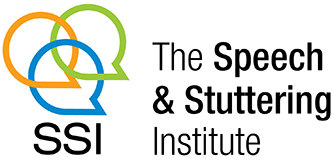Picture yourself in the following situation: You listen with pride as your child learns to use a new speech sound during his motor speech therapy session. Suddenly, instead of “1, 2, 3…doh!,” you hear “1, 2, 3…go!” Then, when the session is over, you can hardly believe your ears when he says “Let’s doh home now!” What happened to that new “g” sound? Why could he say “go” correctly a few minutes ago but not now?
Those are great questions, and there are helpful ways to think about the answers and not-so-helpful ones. The not-so-helpful ways include a very common error in logic that people sometimes make: The Laziness Theory.
The Laziness Theory works like this: I know that my child can say a “g” sound now because I’ve heard him say it before. Since he got it right before, perhaps he’s just being lazy now? Maybe he’s just not putting enough effort into getting his speech sounds right. Maybe I need to tell him to try harder.
Let’s think about The Laziness Theory a bit more carefully. This way of thinking assumes that people produce their sounds correctly by putting in an effort. Is that really true? How hard are you trying when you order your coffee, call your kids to the dinner table, or chat with your neighbour about the news? How much conscious thought are you putting into producing your sounds correctly?
If you’re like most people with no speech difficulties, the answer is that you’re not trying very hard at all. It’s not about effort. In fact, you are likely not even aware of how you are using your breath, moving your mouth, and listening to yourself as you speak, because producing speech is a subconscious and automatic motor skill that developed naturally over time for you during early childhood.
So, what is a helpful way of thinking about your child’s uneven motor speech skills? First, try to observe what helped your child produce the new sound correctly. Did the speech therapist give your child a model of the word to imitate, a touch cue, or a verbal reminder of where to place his tongue? Did the speech therapist keep practice to one word at a time, or to a single short phrase practiced over and over? This type of support helps with accurate motor movements for new sounds; without it, your child may not be able to produce the new sound in a different word or phrase, or even when the same word is part of a different phrase. Your child can be very successful with the right supports, and your SLP can help you learn what those supports are.
Remember, you are not a successful speaker because you’re a hard worker — your speech skills are subconscious and automatic. Likewise, children with motor speech difficulties aren’t being lazy when they produce a sound accurately in one context but not another…they just need to practice using a new motor speech movement, with support, over and over, and in many different words and phrases before they too can speak clearly without thinking about it.
